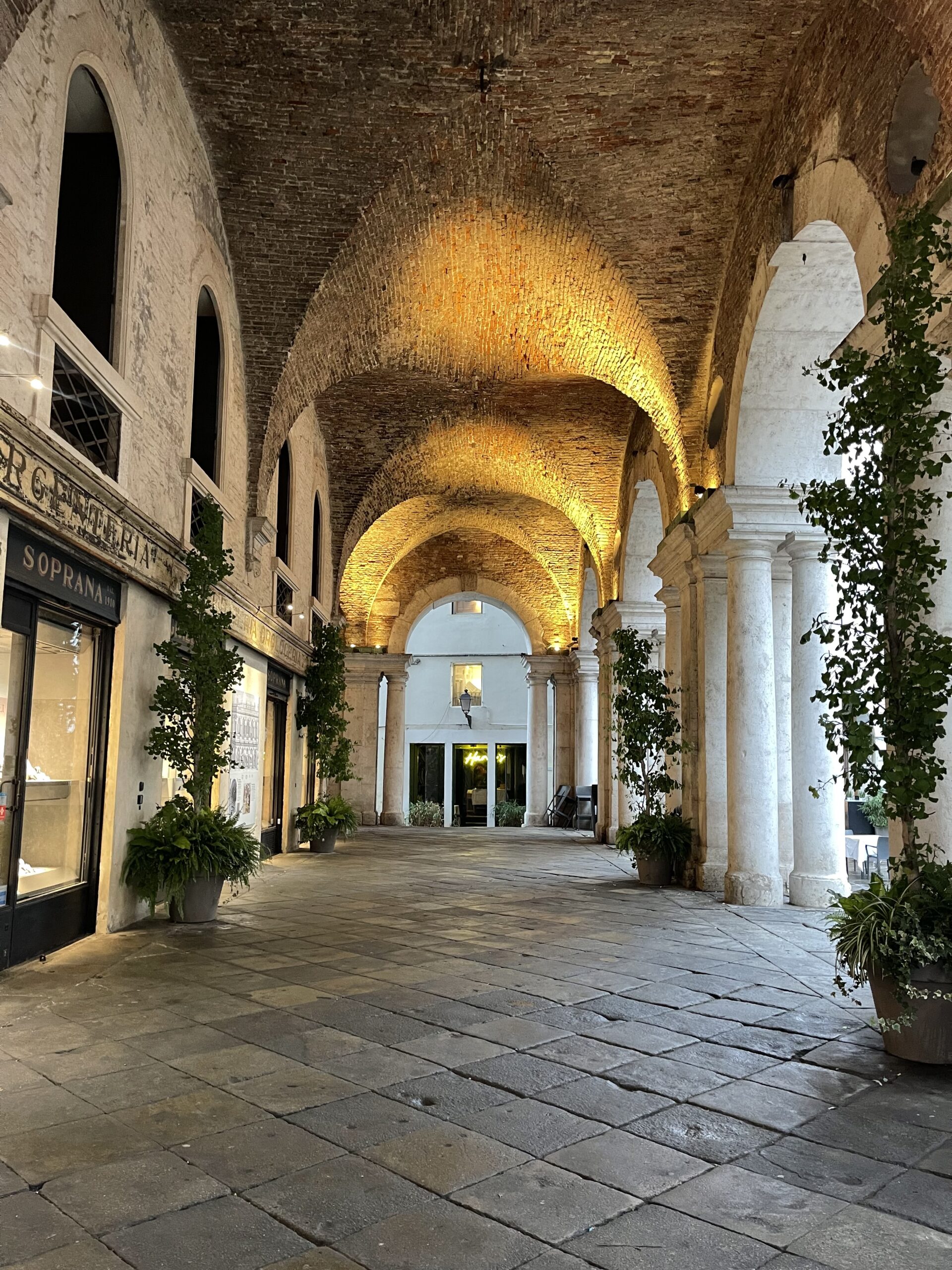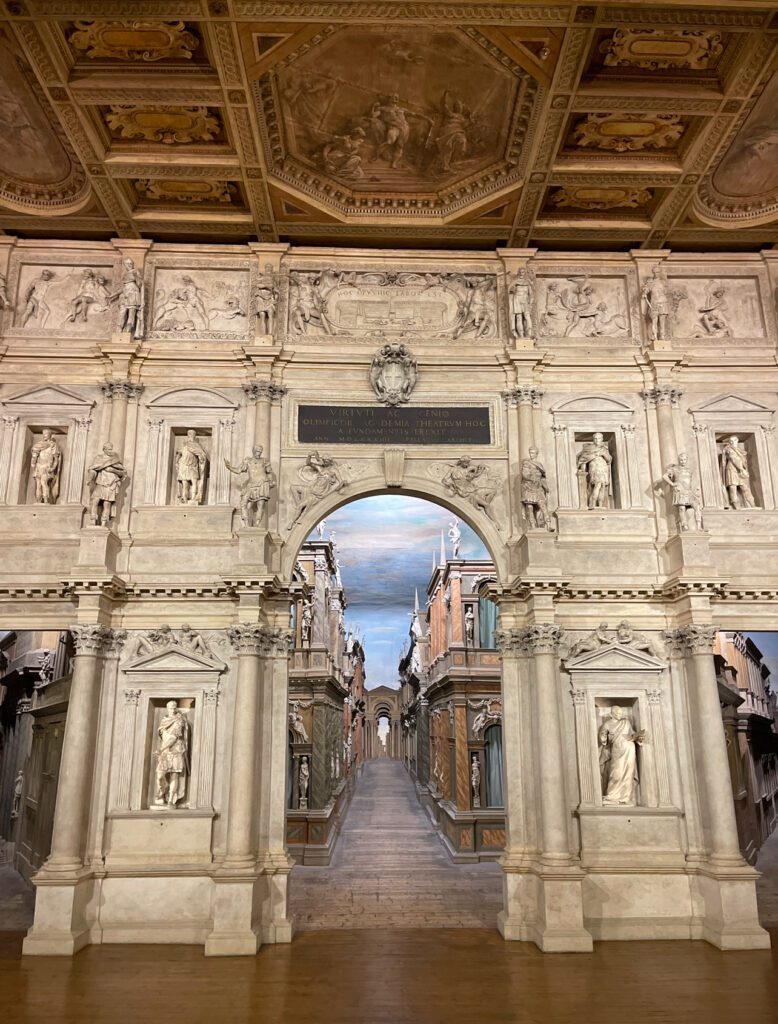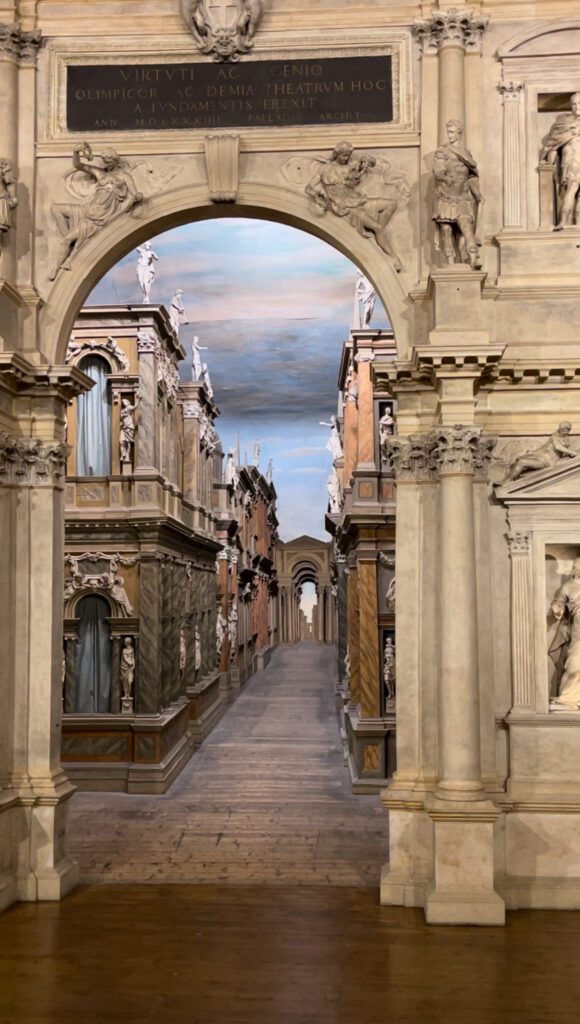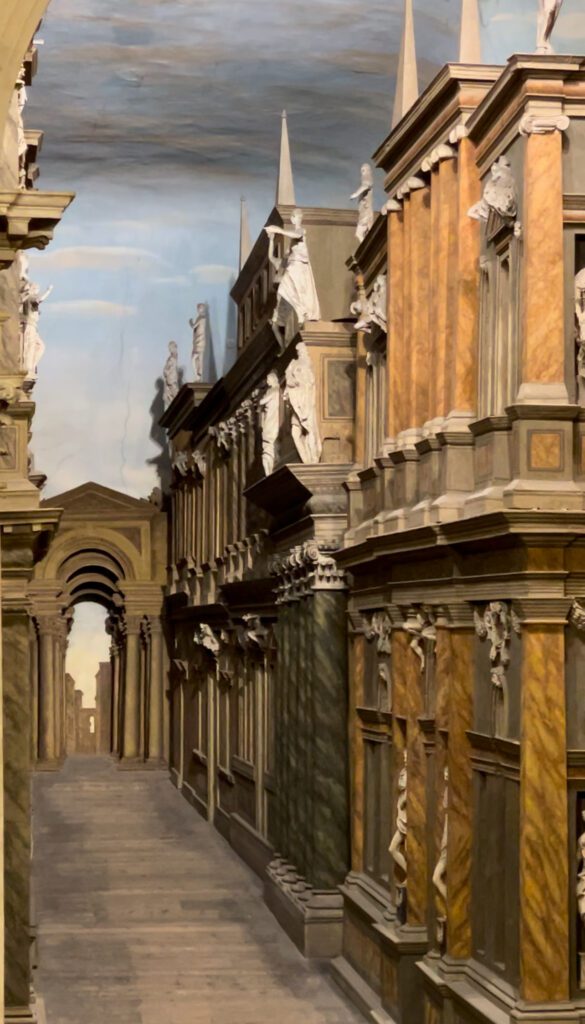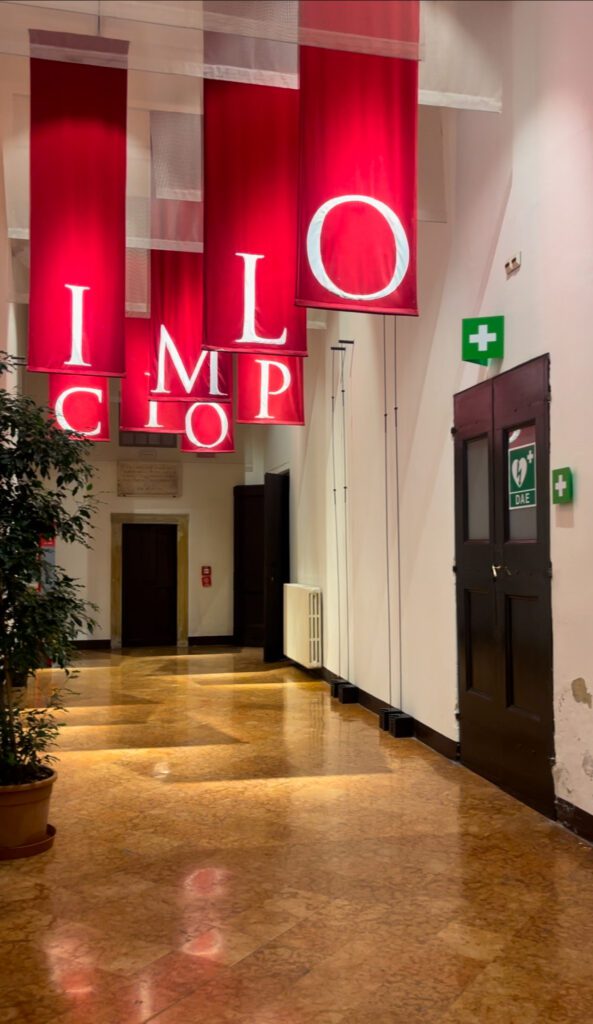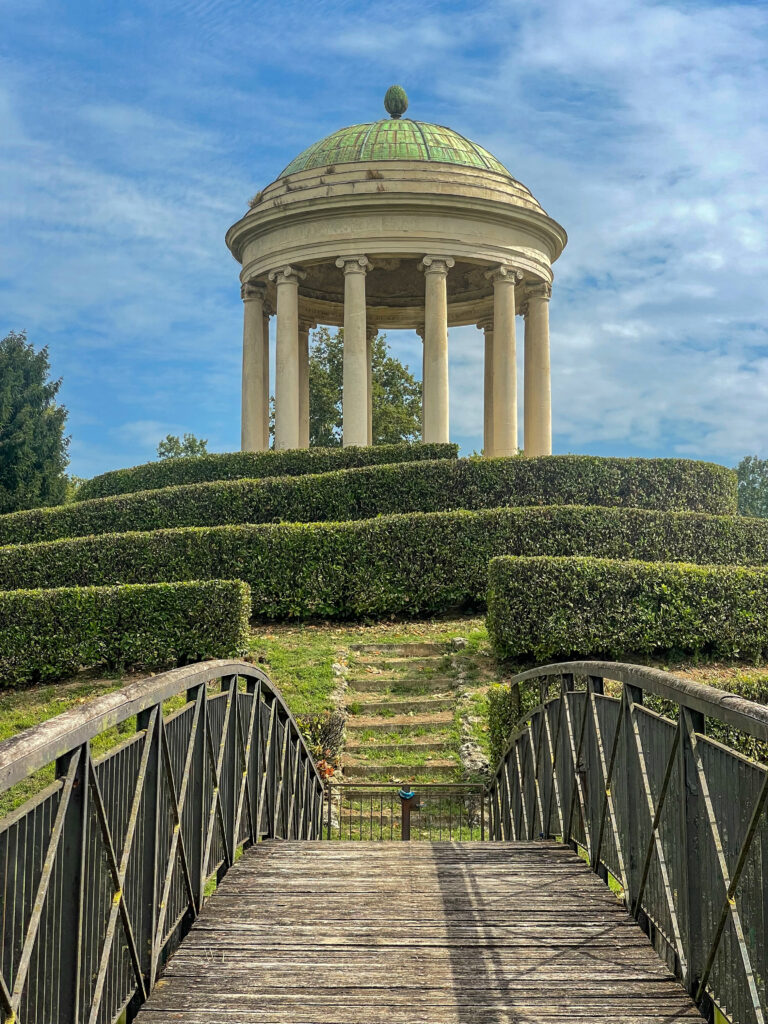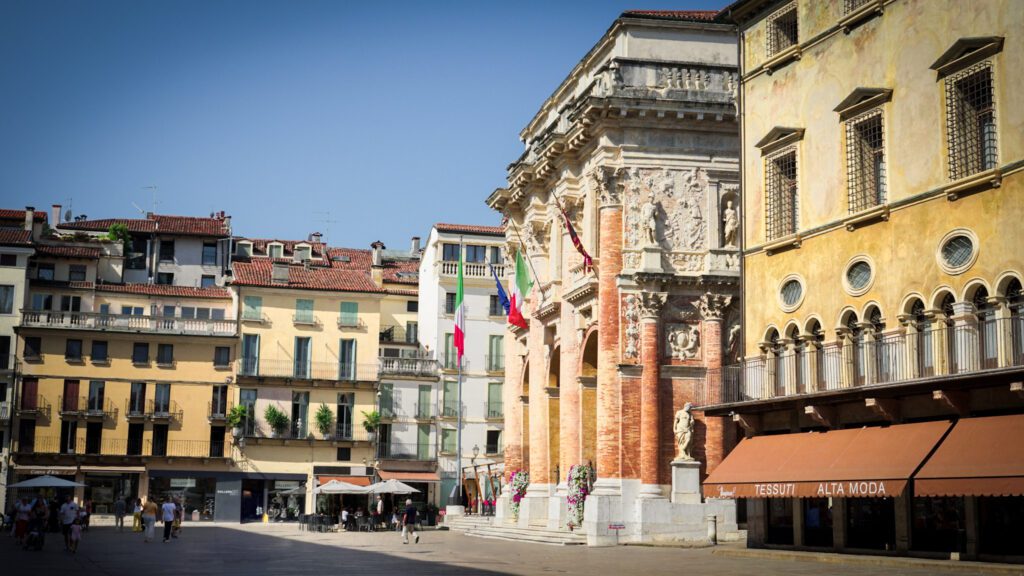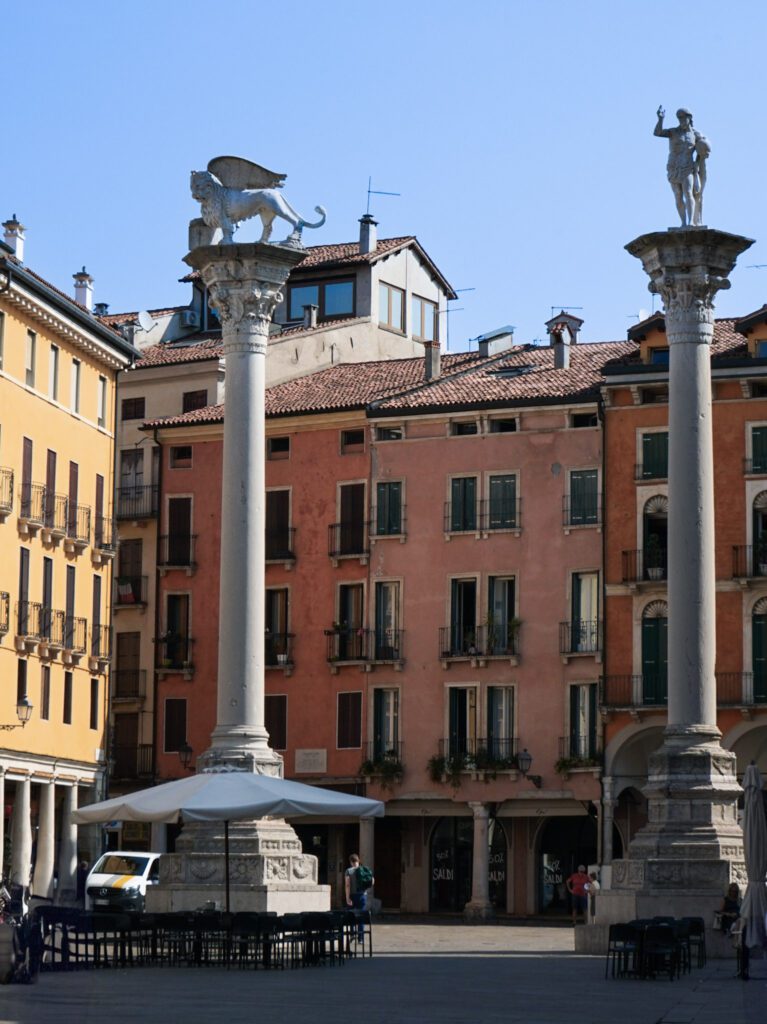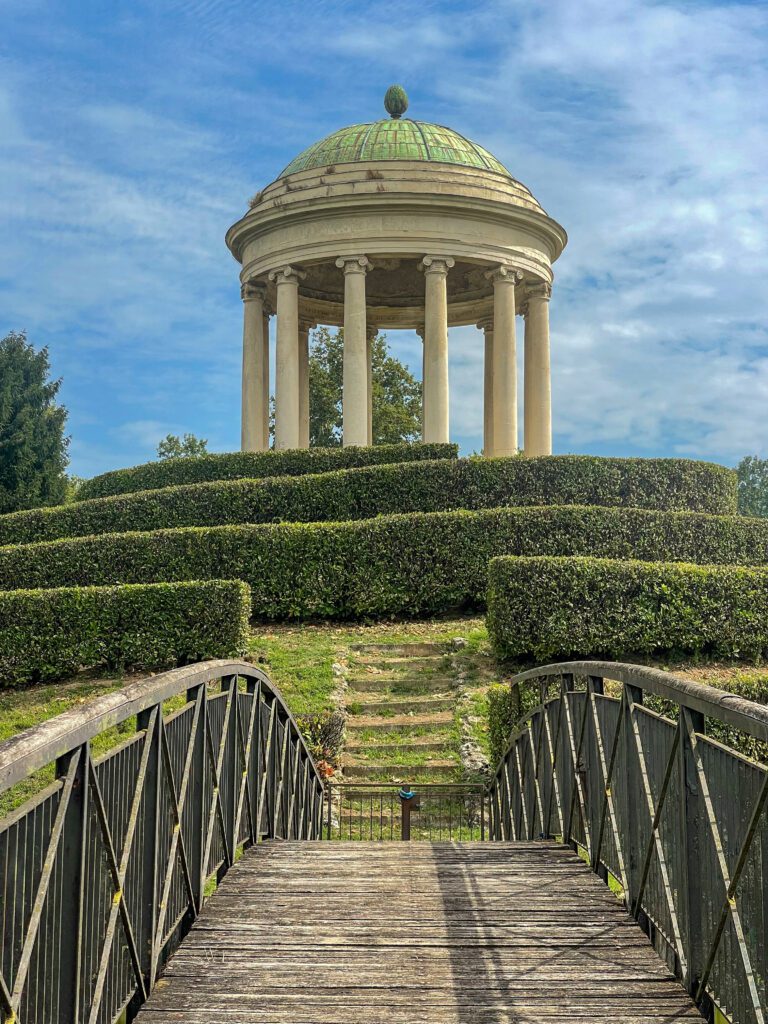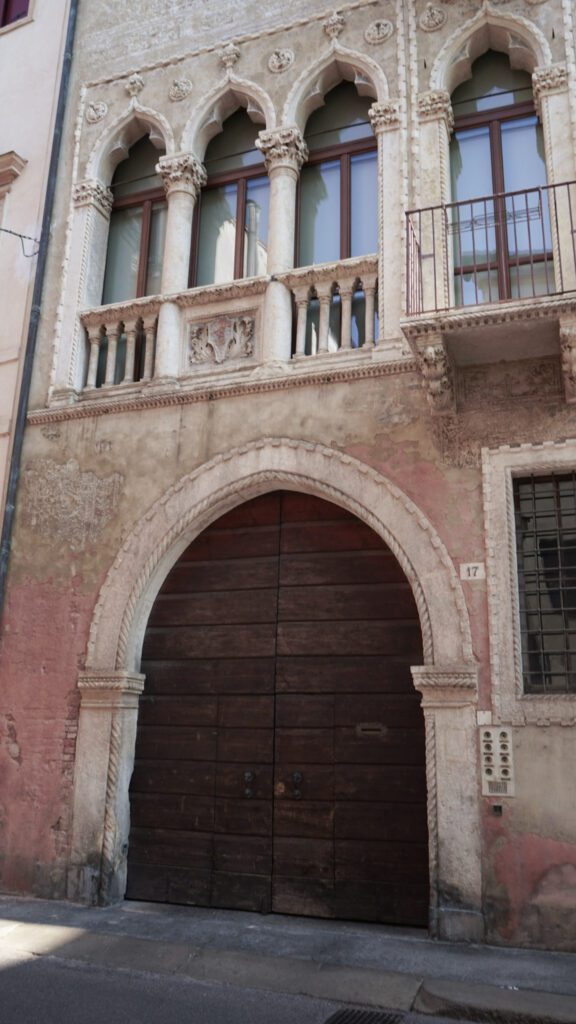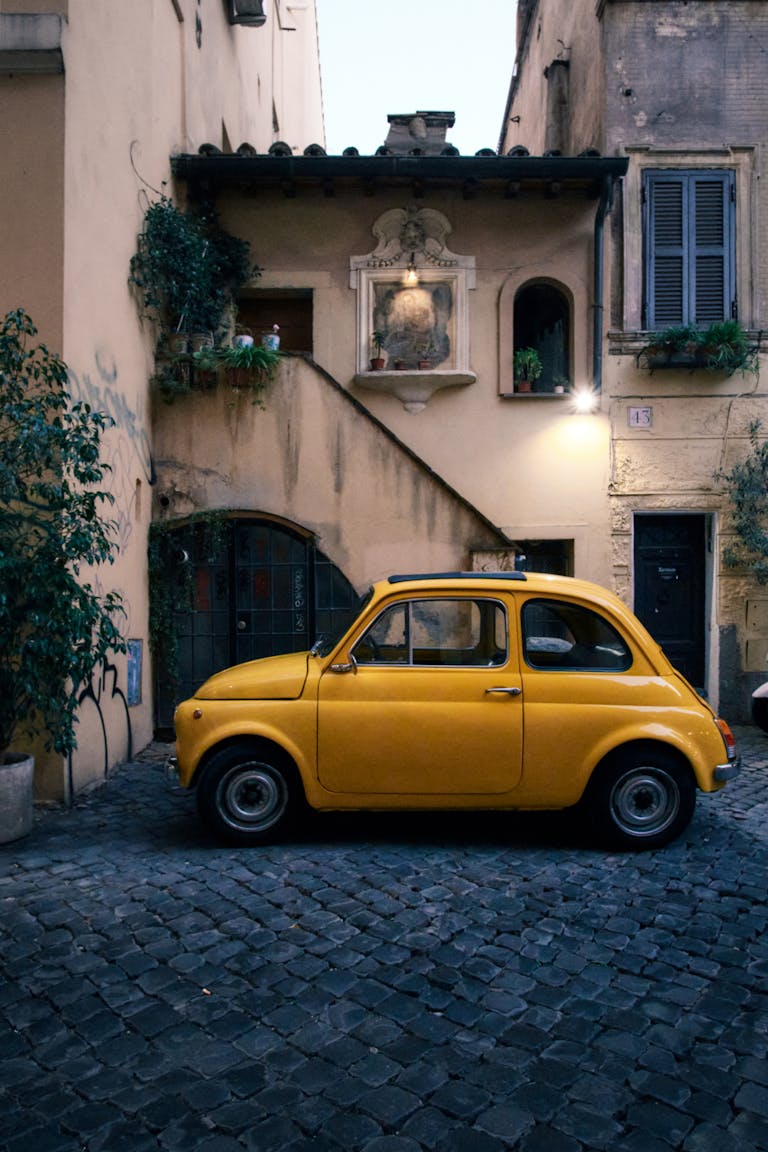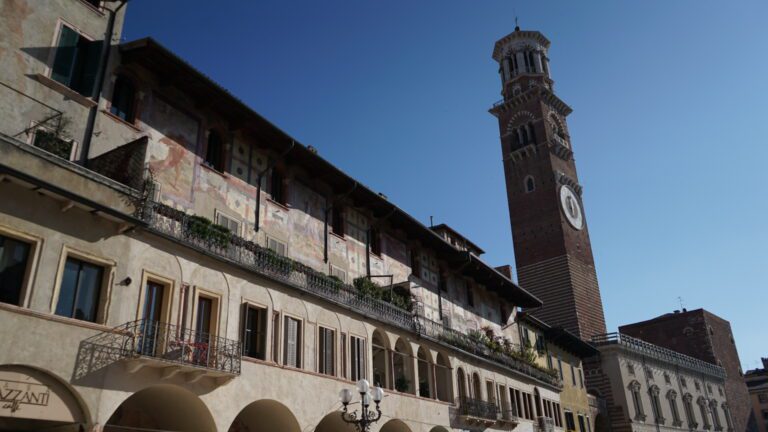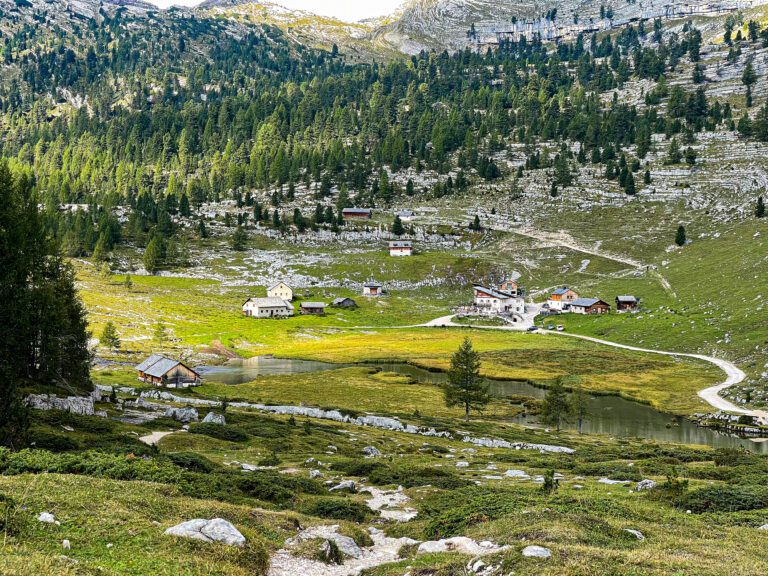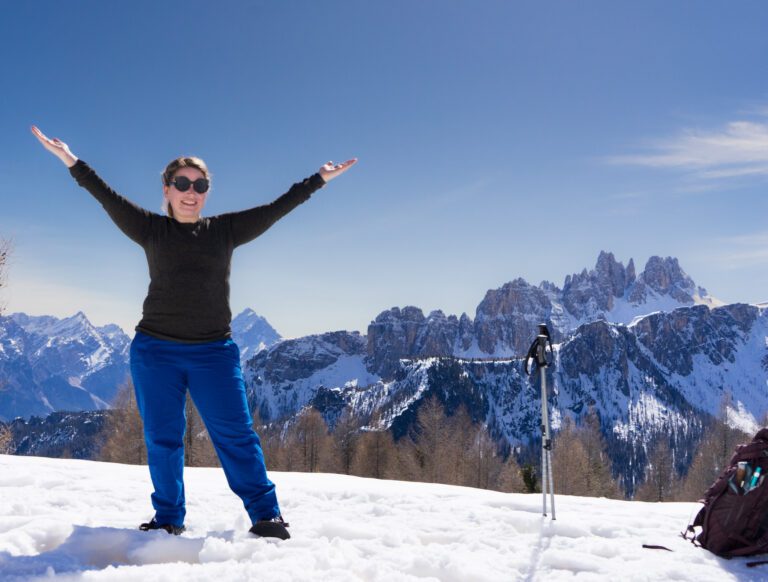Top Palladio Landmarks in Vicenza: A UNESCO World Heritage Tour
Vicenza is one of those places that will steal your heart the moment you arrive!
But what really makes Vicenza shine? The name Andrea Palladio—he’s the genius behind much of the city’s architectural charm! Palladio, a key Renaissance architect, transformed Vicenza into an architectural marvel, a must-see for all.
When we first PCS’d here from Korea, I had no idea who Palladio was. To learn more about my new home in Italy, I took a self-guided UNESCO World Heritage walk.
Palladio’s genius is so significant that UNESCO named Vicenza a World Heritage Site in 1994. From stunning villas to beautiful public buildings, Palladio’s masterpieces are everywhere you look. His designs are all about balance, symmetry, and perfect harmony which has inspired architects for centuries.
Ready for a walking tour? Let’s dive into some of Palladio’s most iconic landmarks, where every corner reveals a piece of architectural magic!
Have you seen my other blog posts on cities near Vicenza, Italy?
- Italy by Train How to travel by train in Italy for First Timers
- The Perfect One-Day Verona Itinerary
- How to Take a Day Trip from Venice to Verona (Train, Car & Tours)
My posts contain affiliate links. If you buy through my links, I may earn a commission at no extra cost to you. I only recommend products and services I use and trust. Thank you for supporting my blog!
Get a Vicenza Card
To see some of the top Palladio landmarks in Vicenza, stop by the tourist center near the Olympic Theatre.
The Vicenza Card is a must-have for visitors exploring the stunning architecture and history of Vicenza. This is one of the first things I tell my friends who are visiting the city.
The city pass grants access to over 11 top cultural and architectural sites.
It includes iconic Palladian landmarks like the Basilica Palladiana, Teatro Olimpico, and Villa Rotonda.
The VICENZA GOLD CARD includes: Olympic Theatre, Palazzo Chiericati Museum, Natural History and Archaeological Museum, Santa Corona Church, Palazzo Thiene Galleries, Diocesan Museum, Palladio Museum, Gallerie d’Italia, Palladian Basilica, Jewellery Museum, and the Resistance and Risorgimento Museum (located outside the city center).
Perfect for architecture lovers, history buffs, or anyone seeking to explore Vicenza’s UNESCO charm, the Vicenza Card is essential for an unforgettable visit.
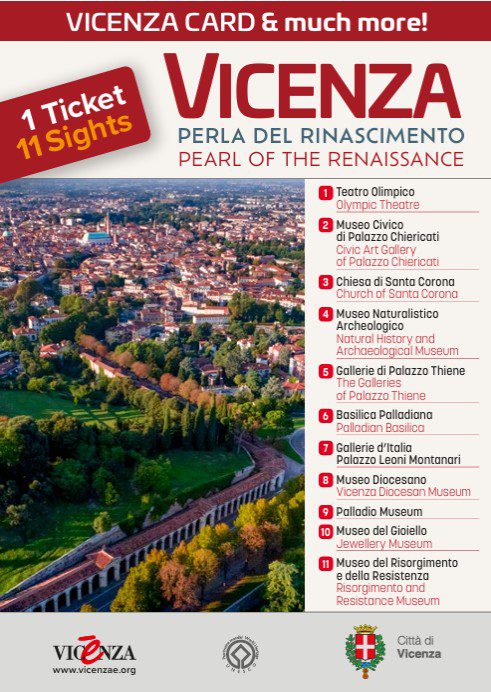
Piazza dei Signori & The Basilica Palladiana: A Grand Entrance
Your exploration begins in the heart of Vicenza, in Piazza dei Signori—the main square of the city. Undoubtedly, this is one of the top Palladio landmarks in Vicenza. In addition, it serves as the beating heart of the city, where you’ll not only find bustling markets but also charming cafes, making it a perfect spot to start your journey.
Piazza dei signori is surrounded by beautiful buildings and home to the Basilica Palladiana, one of Palladio’s most celebrated achievements.
The Basilica Palladiana was originally a medieval palace, but in the mid-16th century, Palladio was commissioned to redesign it. As a result, his work transformed the structure into a prime example of Renaissance architecture, featuring classical elements like columns, arches, and symmetry.
The Basilica’s loggia, a gallery of arches supported by columns, not only offers stunning views of the square but also showcases Palladio’s trademark harmony and balance.
Inside, the Basilica hosts exhibitions and cultural events, while its restored features preserve Palladio’s original design. From Piazza dei Signori, you can admire how Palladio’s vision seamlessly blends with the surrounding architecture, creating a unified, cohesive look.
Ultimately, Piazza dei Signori is a great starting point for a Palladian tour. You can also enjoy a coffee or aperitivo at one of the cafés while taking in the beauty of the Basilica and nearby buildings. Take a beat, slow down and grab a coffee to admire the view!
Teatro Olimpico: The Theater of Illusions
A short walk from Piazza dei Signori leads to the Teatro Olimpico, one of Palladio’s most ambitious projects. Completed in 1585, it’s one of Europe’s oldest surviving enclosed theaters. This is one of my favorite places here in Vicenza!
Designed for dramatic performances, the Teatro Olimpico blends classical principles with the needs of contemporary theater.
The semicircular auditorium with tiered seating ensures great sightlines and acoustics.
The stage’s most striking feature is Palladio’s use of forced perspective, creating the illusion of depth and dramatic visual impact.
The Teatro Olimpico is known for its beautiful woodwork and frescoes depicting classical mythology, enhancing its timeless beauty. Originally designed for Greek and Roman tragedies, it now hosts a variety of performances, including modern plays and concerts.
When visiting, explore the intricate details that make this building unique. Whether you’re an architecture enthusiast or a history lover, the Teatro Olimpico offers a special look at Renaissance achievements.
You can find out more here: Theatre Olympico
Villa Rotonda (Villa Almerico Capra): Palladio’s Iconic Villa
Palladio’s buildings in Vicenza are impressive, but the Villa Rotonda—also known as Villa Almerico Capra—stands out as his most iconic work. Located just outside the city, it showcases Palladio’s vision for rural architecture.
Designed in the 1560s, the villa is celebrated for its perfect symmetry, classical proportions, and harmonious relationship with the landscape.
The design centers on a circular hall, with four porticos—one on each side—offering breathtaking views of the countryside.
The façade is balanced, featuring Ionic columns and a central pediment that gives the structure grandeur. Palladio’s use of Doric, Ionic, and Corinthian columns adds sophistication and elegance.
Set amidst rolling hills and vineyards, the villa’s location amplifies its beauty. Palladio’s design connects the building to its surroundings, with large windows framing scenic views and open spaces inviting nature in.
Today, Villa Rotonda is open to the public. Visitors can explore the interiors and grounds, soaking in the serene atmosphere and stunning views. Be sure to walk around the villa and admire how it blends with the landscape—one of Palladio’s primary goals in his villa designs.
Find out more about Villa Rotonda here
Villa Foscari (La Malcontenta): A Masterpiece Along the Brenta River
Another of Palladio’s masterpieces, Villa Foscari (also known as La Malcontenta), sits along the Brenta River, just outside Vicenza.
Designed for the wealthy Foscari family, this villa embodies Palladio’s ideals of symmetry, classical beauty, and harmony with nature.
The villa’s façade features a central portico supported by Ionic columns, balancing form and function. Inside, lavish frescoes and stucco work add opulence to the simple yet elegant design.
Situated along the Brenta River, the villa’s reflection in the water enhances its beauty, providing a tranquil backdrop to the estate.
A striking feature of Villa Foscari is its seamless integration with the environment. Large windows frame the surrounding landscape, bringing nature into the living space. Palladio’s expertise in blending architecture with nature is clear in how the villa fits perfectly into its setting.
Today, Villa Foscari is open to the public. Visitors can explore the interiors and enjoy the scenic surroundings. The villa’s peaceful atmosphere and stunning design make it a must-see for anyone appreciating Palladio’s architectural legacy.
Palazzo Chiericati: The Civic Palace of Vicenza
n the city center, you’ll find Palazzo Chiericati, another of Palladio’s masterpieces. Designed for the influential Chiericati family, this grand palace exemplifies Palladio’s use of classical elements, with symmetry, columns, and loggias creating elegance and order.
Inside, the Palazzo Chiericati houses the Museo Civico (Civic Museum), showcasing art and historical artifacts from Vicenza’s past. The collection features works by Italian artists and pieces from the city’s rich cultural heritage. The blend of classical architecture and modern exhibits offers a fascinating view of Vicenza’s evolving history.
The palace’s design highlights Palladio’s ability to merge beauty and function. Loggias open up the space, while columns and arches add grandeur and sophistication. As you explore the museum, take note of the architectural details that reflect Palladio’s commitment to classical design principles.
Walking Tours in Vicenza
Tips for Your Palladian Walking Tour:
- Wear Comfortable Shoes: Vicenza’s historic center is filled with cobblestone streets, so comfortable footwear is essential for your walking tour.
- Time Your Visit: If you’re visiting in the summer, try to explore early in the morning or later in the afternoon to avoid the midday heat.
- Guided Tours: To gain deeper insight into Palladio’s architectural legacy, consider taking a guided tour. Many local guides are experts in Palladian architecture and can offer fascinating details about each landmark.
FAQ For First Time Visitors to Vicenza
Final Thoughts
Palladio’s legacy in Vicenza isn’t just about his architectural genius—it’s a celebration of the timeless beauty and power of classical design.
Walking through the city and its stunning countryside is like stepping into a living museum, where each of his masterpieces tells a story of perfect balance, creativity, and beauty.
From the grand basilica to the peaceful villas, Palladio’s influence still echoes through the streets of Vicenza today. Whether you’re a die-hard architecture fan or just someone who loves exploring beautiful places, Vicenza offers something truly special.
It’s a destination you won’t want to miss—and trust me, you’ll leave with a new appreciation for the magic of Palladio’s work!

